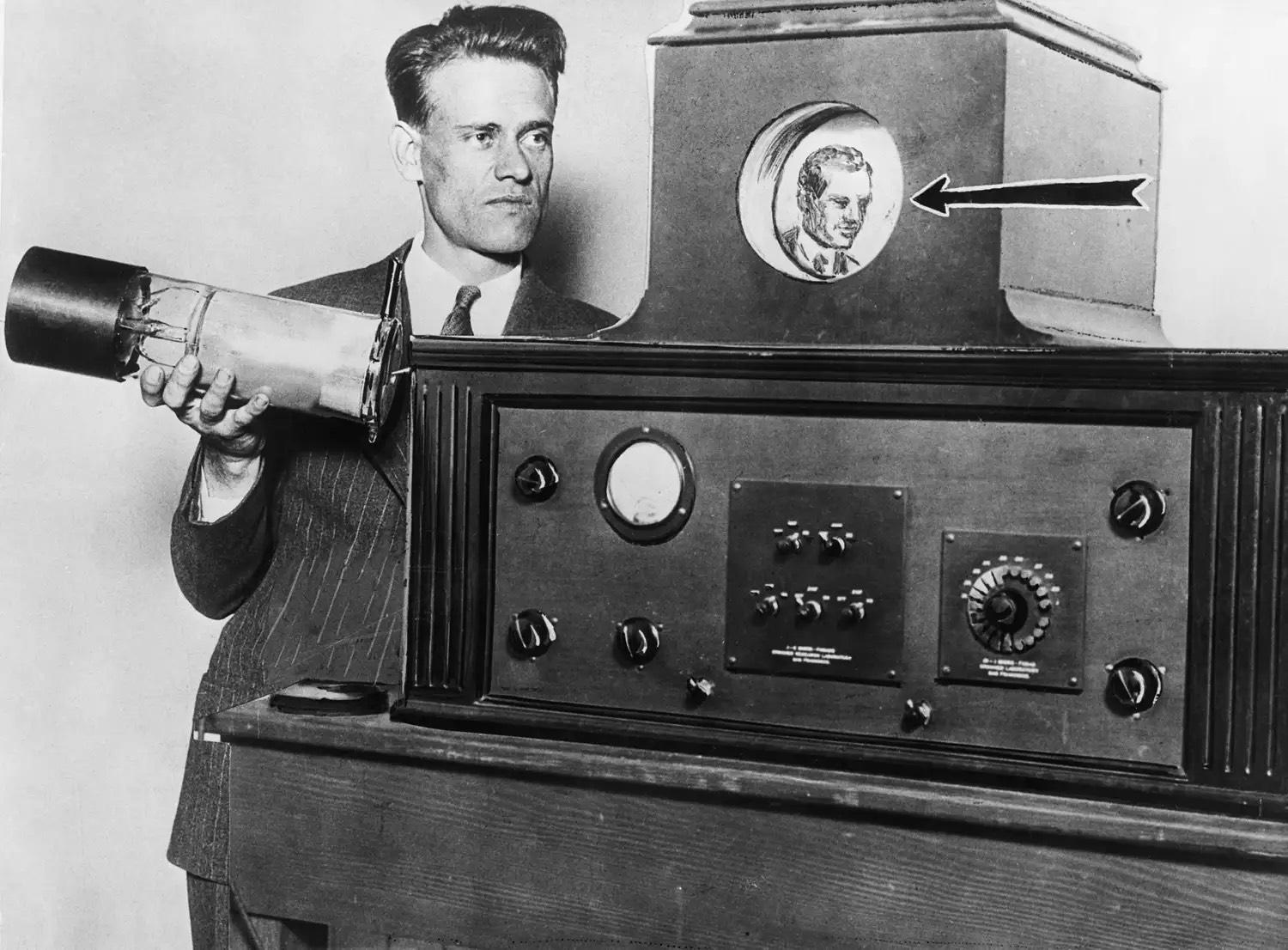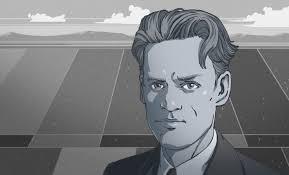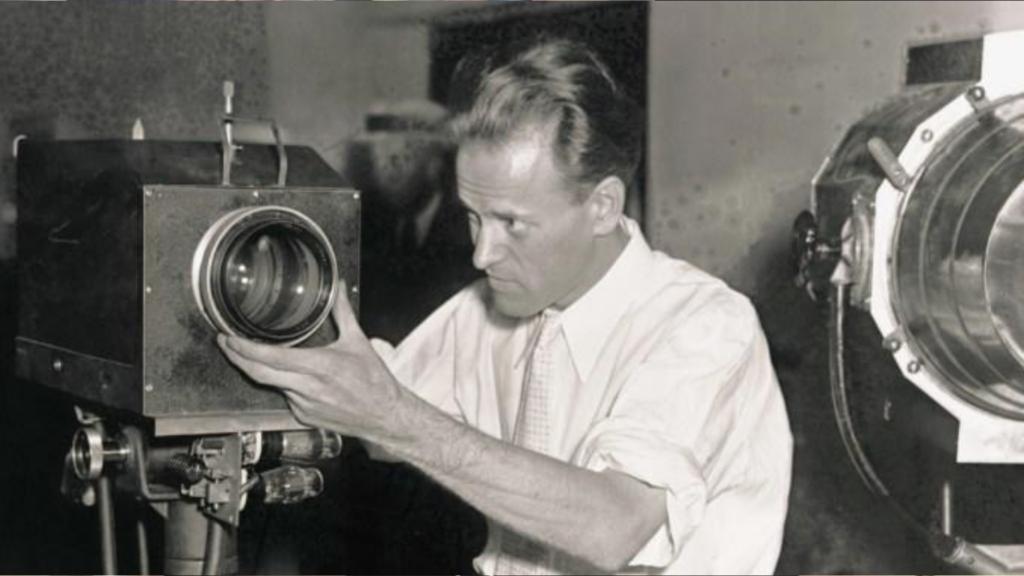Philo (The Farnsworth Invention)

Philo (or, The Farnsworth Invention) Aaron Sorkin or License-free Philo Farnsworth, born in Utah, began experimenting with electricity as a young boy. In 1920, when he was fourteen, he showed his high school chemistry teacher a design he had made for an electronic television only to become involved in an all-or-nothing battle with David Sarnoff, the young president of RCA and America's first communications mogul." A classic American-style David & Goliath tale of the conflict between a self-taught Mormon American inventor and a Russian immigrant, for ownership of the most influential invention of the 20th Century.
WHY
• Idealism
• What is the nature of success?
• What defines success?
• Optimistic, through difficulty
• Aspirational
• Pro-science
• Farnsworth is an American original
• Specific time-period. Recent, not present.
• Hopeful
• Positive, nuanced view of religion
• Positive ending (Lunar landing)
• Primarily dramatic, but plenty of room for comedy
CHARACTERS
Philo Farnsworth: American inventor and technology pioneer. He is best known for his 1927 invention of the first fully functional allelectronic image pickup device, the image dissector, as well as the first fully functional allelectronic television system. In later life, Farnsworth invented a small nuclear fusion device, the Farnsworth Fusor, employing inertial electrostatic confinement (IEC). He held 300 patents.

Pem Farnsworth: Wife of Philo. Pem (Elma) worked daily in the lab, with Philo. She rendered the technical drawings and typed up the day’s progress in a journal of daily
experiments. The journal would be the crucial element in proving Philo’s “priority of invention” of television.
Vladimir Zworkyin: Russian-American inventor, engineer, and pioneer of television technology. Zworykin invented a television transmitting and receiving system employing cathode ray tubes. He played a role in the practical development of television from the early thirties, including charge storage-type tubes, infrared image tubes and the electron microscope.
David Sarnoff: A Russian and American businessman who played an important role in the American history of radio and television. He led RCA for most of his career in various capacities from shortly after its founding in 1919 until his retirement in 1970. He headed a conglomerate of telecommunications and media companies, including RCA and NBC, that became one of the largest in the world. Named a Reserve Brigadier General of the Signal Corps in 1945, Sarnoff thereafter was widely known as "The General".
Lab assistants
Scientists
Television personnel
Reporters
SYNOPSIS

Inventor Philo Taylor Farnsworth was born on August 19, 1906, in Beaver, Utah. He was born in a log cabin constructed by his grandfather, a Church of Jesus Christ of Latter Day Saints pioneer. An amateur scientist at a young age, Farnsworth converted his family's home appliances to electric power during his high school years and won a national contest with his original invention of a tamper-proof lock. In his chemistry class in Rigby, Idaho, Farnsworth sketched out an idea for a vacuum tube that would revolutionize television — although neither his teacher nor his fellow students grasped the implications of his concept.
Farnsworth continued his studies at Brigham Young University, where he matriculated in 1922. He was forced to drop out following the death of his father two years later. His plans and experiments continued nonetheless. By 1926, he was able to raise the funds to continue his scientific work and move to San Francisco with his new wife, Elma "Pem" Gardner Farnsworth. The following year, he unveiled his all-electronic television prototype—the first of its kind—made possible by a video camera tube or
"image dissector." This was the same device that Farnsworth had sketched in his chemistry class as a teenager.
Farnsworth rejected the first offer he received from RCA to purchase the rights to his device. He instead accepted a position at Philco in Philadelphia, moving across the country with his wife and young children. Throughout the late 1920s and early 1930s, Farnsworth fought legal charges that his inventions were in violation of a patent filed prior to his by the inventor Vladimir Zworkyin. RCA, which owned the rights to Zworkyin's patents, supported these claims throughout many trials and appeals, with considerable success. In 1933, the embattled Farnsworth left Philco to pursue his own avenues of research. Farnsworth's contributions to science after leaving Philco were significant and far-reaching. (Radar, Infrared Telescope, Fusion)
The TV tube Philo developed would become the standard in broadcasting. Yet Philo Farnsworth spent years defending his patent and rebuilding his business. On July 21, 1969, Neil Armstrong stepped out of Apollo 11 onto the moon’s surface in an area called the Sea of Tranquility. Farnsworth was sitting in his living room with Pem, watching the live feed — the image transmitting quickly, row by row like the furrows in a field. He turned to her and said, “Pem, this has made it all worthwhile.”
LINKS
Documentary
Sorkin Version
